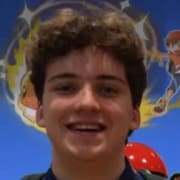There's Always Next Year: A Decade Without Phillies Playoff Baseball
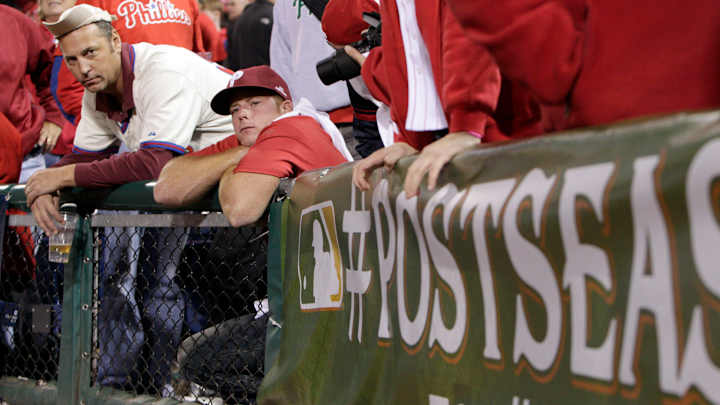
If you turned back the clock a decade and told Philadelphia Phillies fans that their series against the St. Louis Cardinals would be the last time the organization would play post-season baseball for over a decade, most would've laughed it off. But much to the dismay of Phillies fans everywhere, it has become a reality.
The 2011 season looked like many of the years that came before it, another great year for the Philadelphia dynasty in the NL East, after all, they won 102 games which is a franchise record as well as clinching their fifth straight NL East title, which is the second-longest winning streak behind the Atlanta Braves who held down the NL East for 11 straight seasons from 1995-2005.
Another highlight of the season was some of the big acquisitions that were made before and during the season, with the two big deals being Cliff Lee and Hunter Pence.
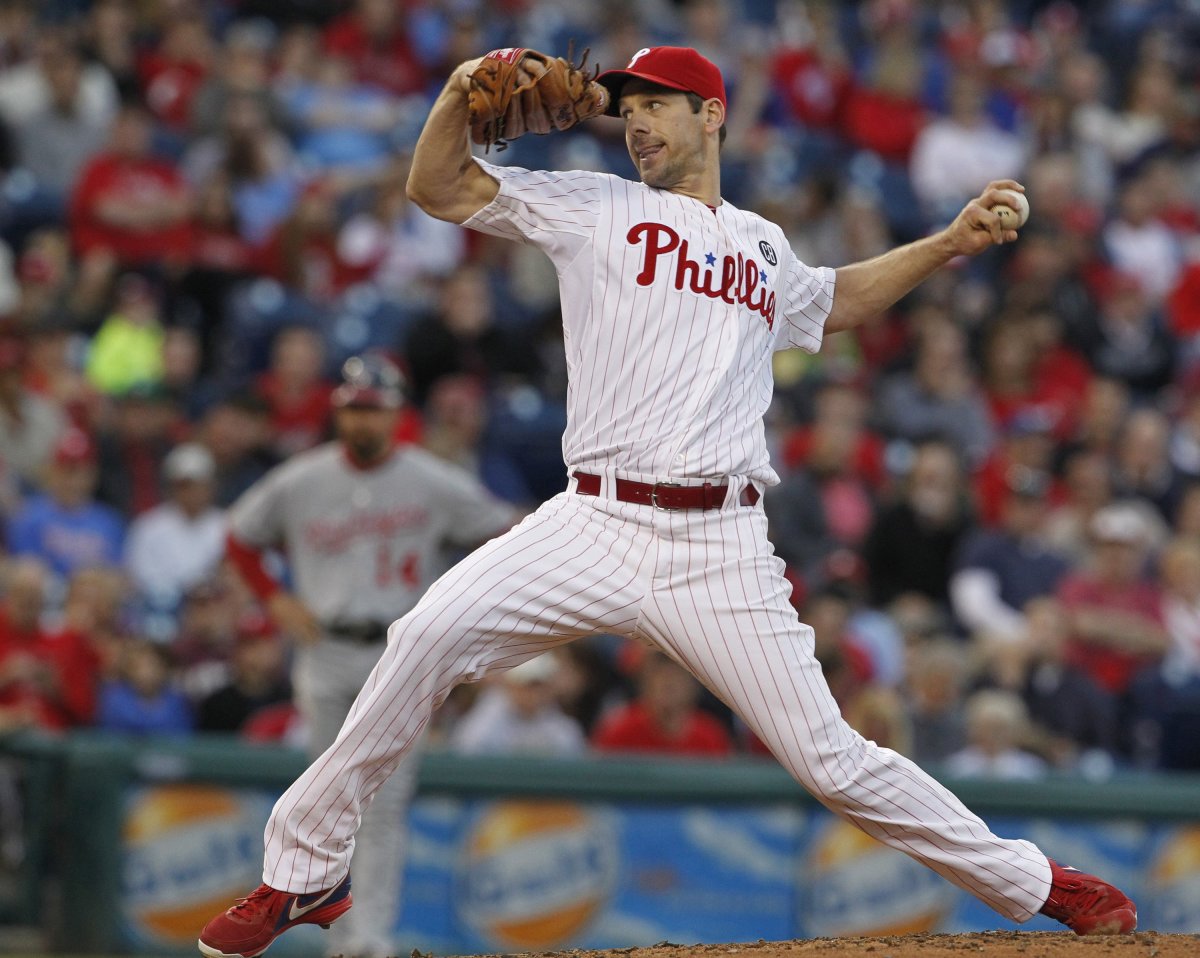
On the surface, it looked like the sky was the limit for Philadelphia, but their playoff performance that year says otherwise. Their series against the future World Series-winning St. Louis Cardinals was a well-fought series but the Phillies offense would stay silent at times where it really mattered, players like Placido Polanco, Ryan Howard, and Carlos Ruiz all had batting averages under .150. All three of these players played great baseball during the regular season but would come up short in the series against, the Cardinals. For example:
Polanco: Regular Season (.277/.674/.335) NLDS: (.105/.105/.105)
Howard: Regular Season (.253/.488/.346) NLDS: (.105/.143/.263)
Ruiz: Regular Season (.283/.371/.383) NLDS: (.059/.111/.059)
For fans at the time, it was difficult to be upset with the Phillies because they went the distance and just came up short, and as every Philadelphia fan has said at least once, "there's always next season."
The 2012 season is where the cracks really started to show, and mark the beginning of a painful era for Phillies fans. For the first time in a decade, Philadelphia finished at the .500 mark, as well as for the first time in five years, the Phillies missed out on postseason baseball.
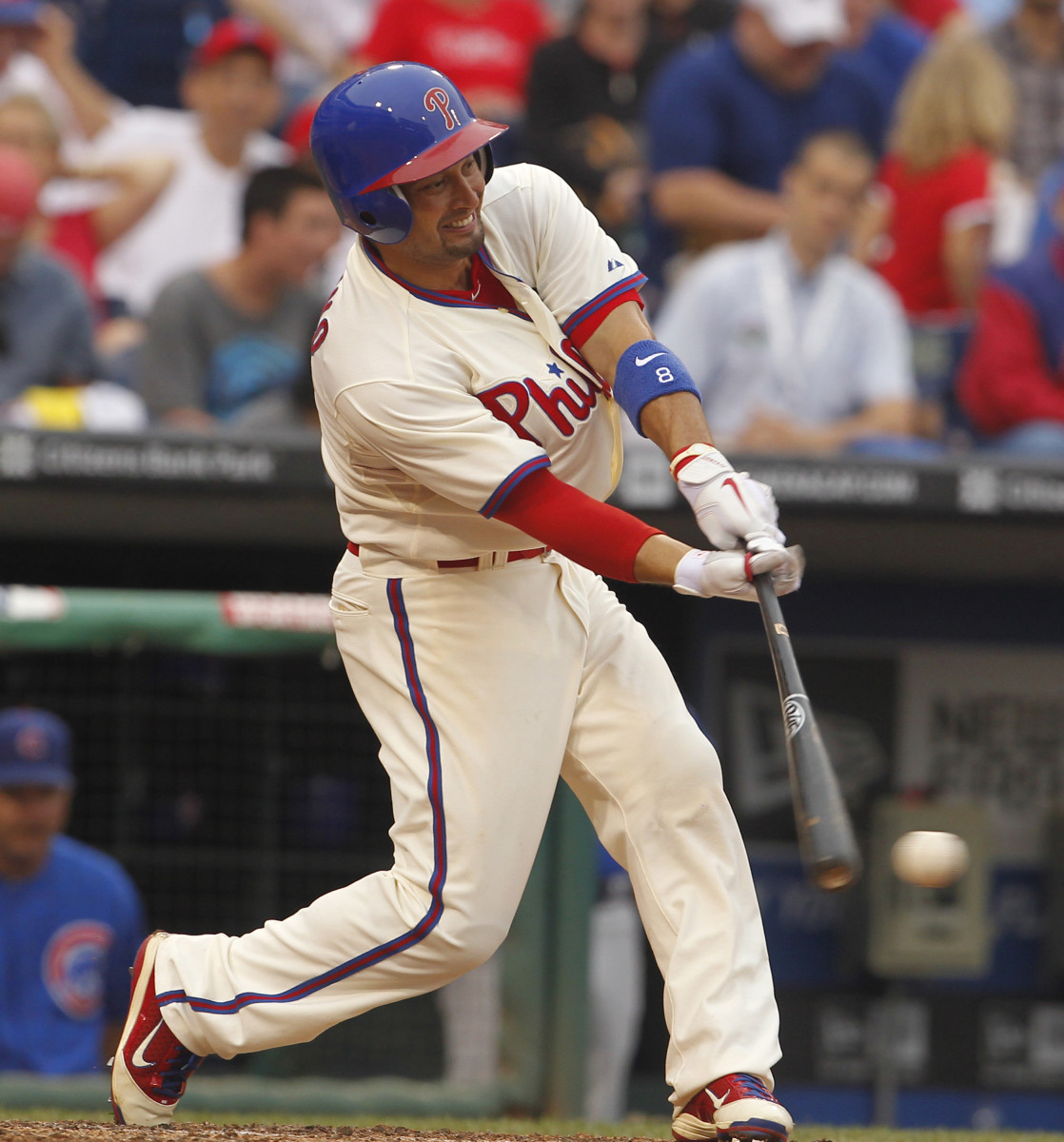
On top of this, the trade deadline saw Philadelphia's front office trade away Pence and Shane Victorino. For Phillies fans, Pence was loved but the departure of Victorino stung as he had been with the Phillies through thick and thin.
2013 managed to be another step down from the previous season, Philadelphia failed to make .500, finishing with a record of 73-89. From start to finish, this was by far the rockiest season that the organization had seen in a while, this rockiness captivated in the sudden sacking of Charlie Manuel on August 16.
This termination would mark the end of an era for the Phillies on multiple levels, the biggest impact that he provided was a sense of normalcy. Since Manuel, no manager for Philadelphia has lasted more than two seasons with the club.
Having the benefit of hindsight is important when looking back at the Phillies' decision to sack Manuel. The 2013 season was full of things that were outside of his control, the two biggest being injuries to Halladay and Howard.
Another big departure seen at the end of the 2013 season was Halladay announcing his retirement. As previously mentioned, Halladay had battled an injury all season wanted to start to spend more time with his family.
Ryne Sandberg took the job as Phillies manager for the rest of the season and kept it going into the 2014 season.
Sandberg's first full season as skipper wasn't any better or any worse than the season before it. The team finished the season with the same record, 73-89. Another trend that would start to plague the Phillies during the mid-2010s was the decline in attendance. In comparison to 2013, on average 8,000 fewer fans were going to Citizens Bank Park, or another way to look at it for the business side of baseball, 600,000 fewer tickets were sold which hurt Philadelphia's front office. During the draft that season, the Phillies drafted a young pitcher from LSU named Aaron Nola, as well as a first baseman from CSU named Rhys Hoskins.
The offseason saw the departure of another long-time Phillie, Jimmy Rollins got traded to the Los Angeles Dodgers for cash considerations, minor league pitcher Tom Windle, and Zac Eflin. Rollins' departure would continue the trend of the Phillies getting rid of aging players for future prospects.
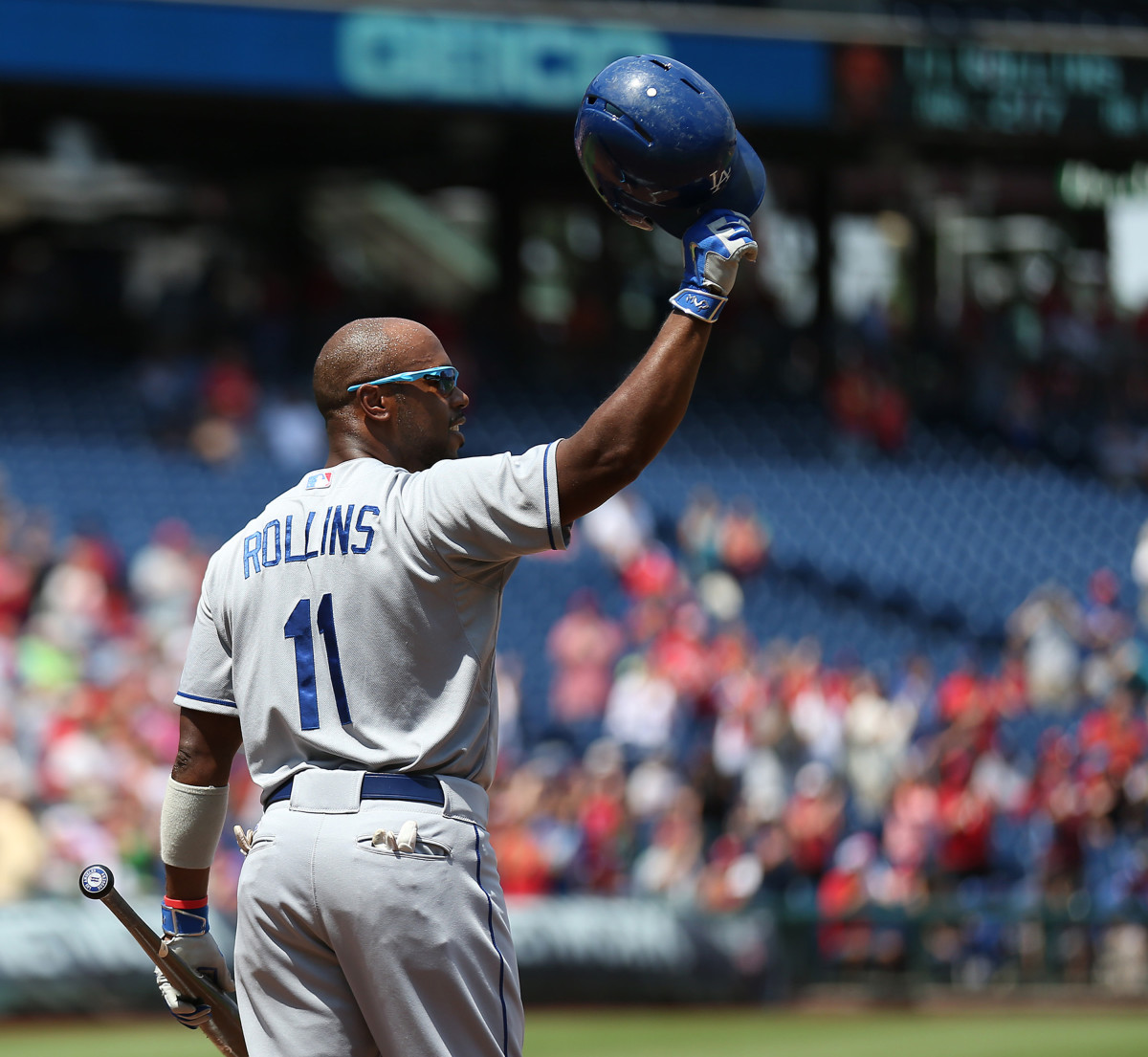
The 2015 season would go down as the worst season for Philadelphia in the past decade for numerous reasons. To start, for the past two seasons the Phillies managed to make at least the .450 mark, in 2015, the Phillies failed to make the .400 mark, finishing with a final record of 63-99 (.389). This was the first time since 1969 that the Phillies had lost 99 games.
The 2015 season being the worst season yet wasn't just contained to their record but also attendance. On average in 2015, only 22,600 fans would show up to support the Phillies each game. Something important to remember is that Citizens Bank Park has a seating capacity of 43,035 seats.
The mid-season departures for the Phillies in 2015 were big, in June 2015, Sandberg announced he'd be stepping down as manager of the Phillies, with third base Coach Pete Mackanin taking the reins.
Additionally, Philadelphia traded away center fielder Ben Revere to the Blue Jays and long-time Phillie Cole Hamels to the Texas Rangers. Much like the previously mentioned Phillies, Hamels was a key part of the 2008 World Series campaign, which saw him receive the World Series MVP.
The high point of the previous few seasons including the 2015 season, took place in Hamel's last start for Philadelphia in which he threw a no-hitter against the Chicago Cubs at Wrigley.
The Phillies' 2016 season wouldn't be anything out of the ordinary in comparison to the previous years, 71-91 (.438). One key part of the 2016 season would be it marks the start of Philadelphia's rebuild to where they are today, NL East contenders.
This season would see more key players of the roster that we know today like Aaron Nola getting more playtime. In 2016, Nola would start and play in 20 games, seven more than he did in the previous season.
The last thing to note about the 2016 season is that it would see the last members of the Phillies 2008 World Series roster depart, with Carlos Ruiz being traded to the Dodgers, and Ryan Howard playing his last game in a Phillies uniform before playing in the Minor Leagues for the Atlanta Braves and Colorado Rockies in the 2017 season.
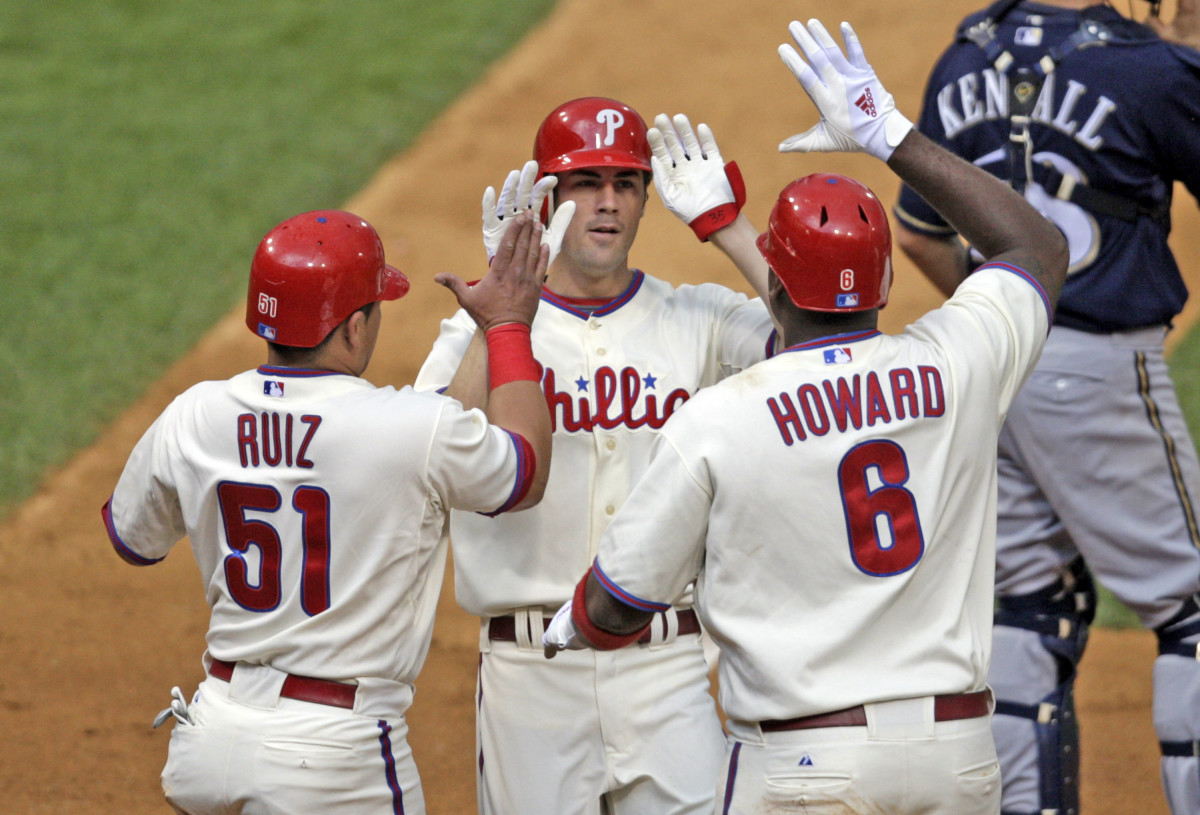
The 2017 season would follow the same trend as the previous season, it allowed more playing time for players that were coming up through the Phillies system. A key call-up for the season was Rhys Hoskins who would make his major league debut on August 9th, 2017. Philadelphia's record that year, 66-96 (.407) was a downgrade from the previous season but overall the season would just be the calm before the storm that was of the season to come.
Due to the Phillies' performance over the previous two seasons, on Sept. 29, Philadelphia's front office made the announcement that Mackanin would not be returning in 2018 to manage the Phillies. Mackanin's time as manager would be remembered for steering the ship in the right direction after the disaster that was the 2015 season.
To replace Mackanin, Philadelphia hired Gabe Kapler, a former World Series winner with the Boston Red Sox in 2004.
As mentioned earlier, the 2018 season for Philadelphia would be a little sneak peek into what some of the key players on the team could do, which for Phillies faithful, was more than a welcome sight.
Key contributions this season would be from the two big franchise pieces at this point, Hoskins and Nola.
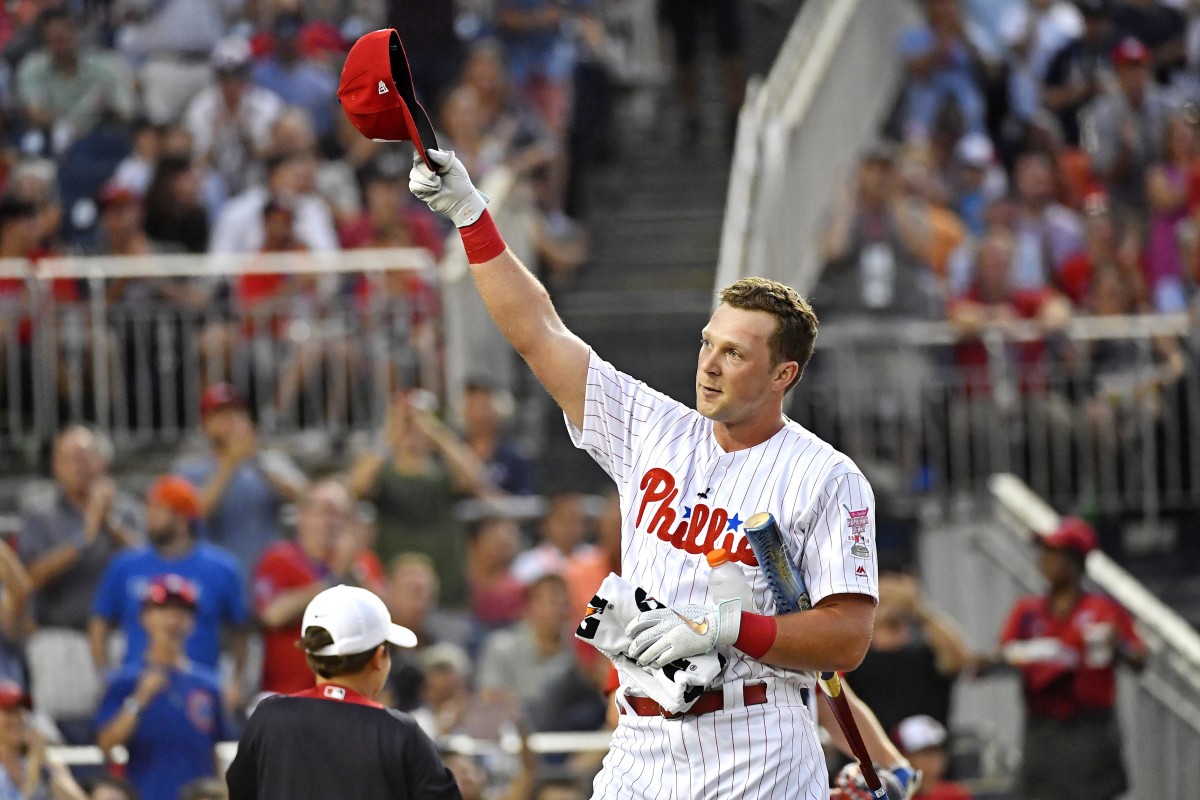
Hoskins would find his groove in the big leagues, playing three times the games that he did in 2018. Although not making it on the National League's All-Star roster, Hoskins represented the Phillies in the 2018 Home Run Derby, making it to the second round, and losing to Kyle Schwarber by one home run. Hoskin's would be the first Phillie to partake in a Home Run Derby since Ryan Howard in 2009.
Nola would do even more by grabbing himself a spot on the National League's All-Star team in Washington D.C., and finishing third in NL Cy Young Award voting, falling short to Max Scherzer and Jacob DeGrom.
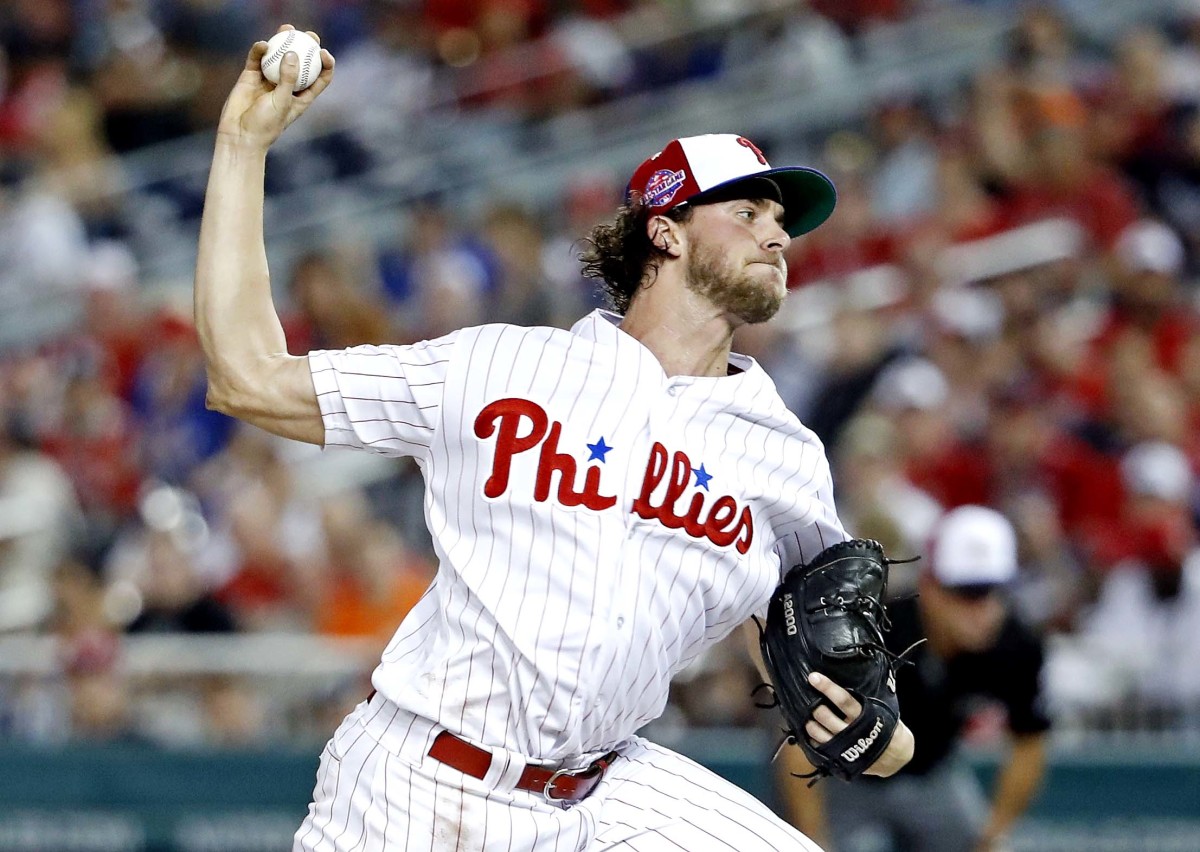
Apart from this, the 2018 season was the first time since the start of the downfall of the Philadelphia dynasty that the Phillies finished above fourth place in the National League East, finishing the season short of the playoffs, with a record of 80-82 (.494).
The 2018-19 offseason would be the ultimate turning point for the franchise, as the Philadelphia front office did everything in their power to turn the direction of the team from rebuilding to contenders.
The biggest signing in the offseason as well as one of the biggest signings in MLB history was the 13-year $330 million contract that the Phillies handed Bryce Harper. Harper was more than deserving of his contract and would look to make an immediate impact on the team and the fans as a whole.
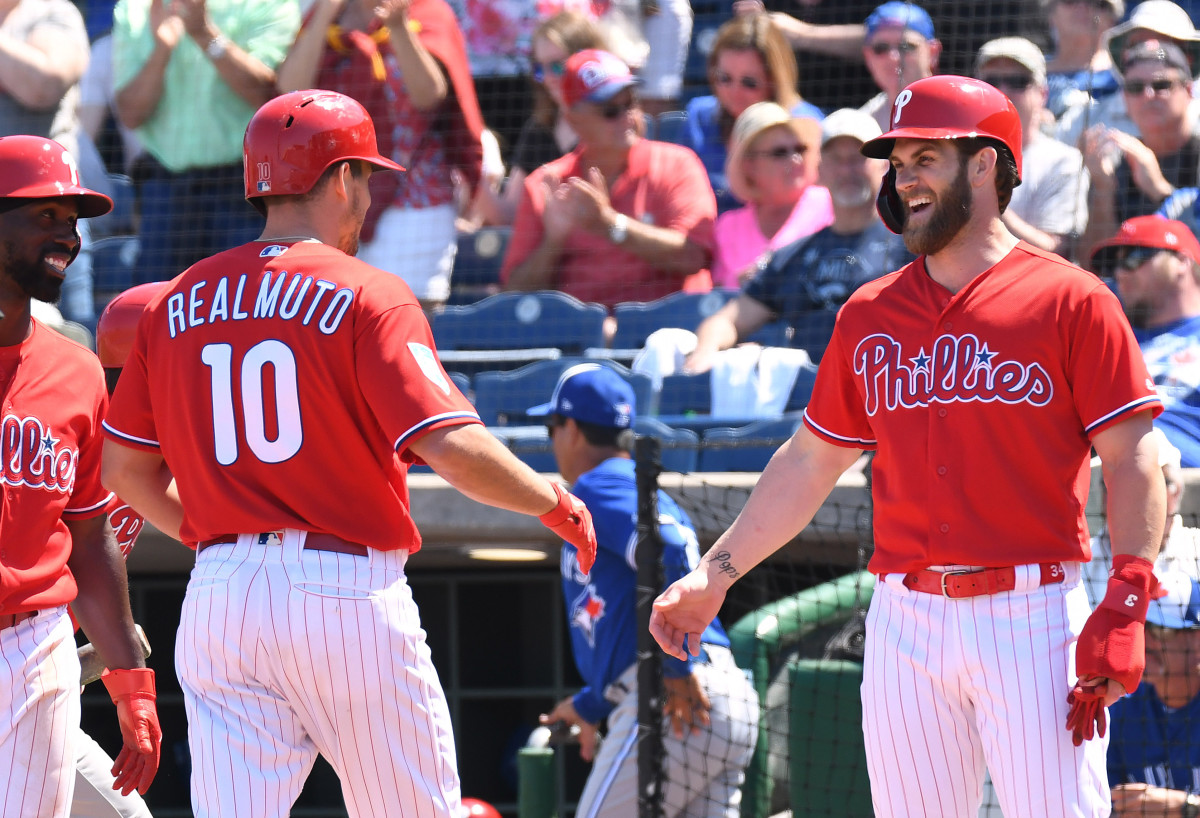
Harper wasn't the only key signing that was made in the offseason, 2018 All-Star and Silver Slugger winner J.T. Realmuto was traded to the Phillies from the Miami Marlins where he had been since 2014. Additionally, former NL MVP, Golden Glove winner, four-time Silver Slugger, Andrew McCutchen joined Philadelphia.
On top of these acquisitions, the Phillies' front office would agree with Nola on signing a four-year contract extension which made sure he wasn't leaving Philadelphia anytime soon.
These acquisitions summoned an immediate change in how the Phillies were perceived, in the span of the offseason they went from a team that was rebuilding around Nola and Hoskins, to a team that posed a threat to everyone else in the league.
The effect of these changes was felt immediately as the Phillies opened their season at home against the defending NL East champion Atlanta Braves. Philadelphia crushed Atlanta, 10-4, for all 44,469 that were in attendance, and all of those who were watching at home, it was a welcoming sight to see.
Throughout the season, the Phillies suffered multiple setbacks, the biggest being Andrew McCutchen's season-ending torn ACL, and Odubel Herrera being suspended the remainder of the season due to an incident that violated the MLB's domestic violence policies.
Arguably the biggest moment in the season came on August 15th when Bryce Harper hit a walk-off grand slam against the Chicago Cubs which helped keep Philadelphia's playoff dreams alive.
That season would continue the trend of the Phillies not making it to the playoffs but it wasn't a bad season at all, finishing with a record of 81-81 (.500). It fully marked the end of the rebuilding era and started the beginning of what is hoped to be a more promising era for the city of Philadelphia.
As with other seasons, the end of the 2019 season saw the Phillies' front office let go of Gabe Kapler and bring on long-time New York Yankee's manager Joe Girardi. This would mark the fourth change in manager over the previous five years for Philadelphia.
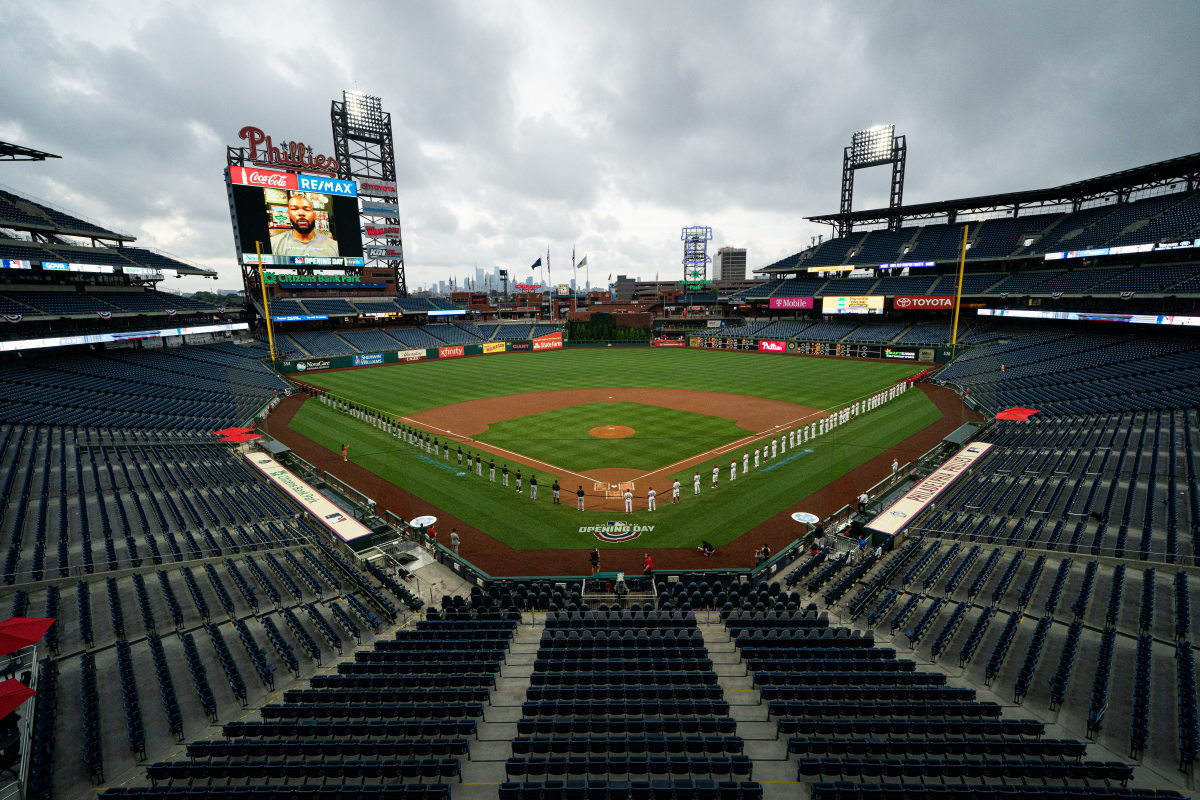
The 2020 season was different for all teams across the MLB due to the COVID-19 pandemic, at times people were uncertain if there would be any baseball played at all. But alas on July 24, the Phillies would play against the Miami Marlins in Philadelphia in front of an empty stadium, the MLB has resumed play but with a shortened 60 game season.
All of the star players were there including offseason signing Zach Wheeler who looked to help Nola and Elfin in the starting rotation. For the second straight season, the Phillies were playoff contenders.
But when it came down to the wire, the Phillies dropped crucial games to the Tampa Bay Rays which shut the door on the playoffs for the ninth straight season, wrapping up the season with a record of 28-32 (.467).
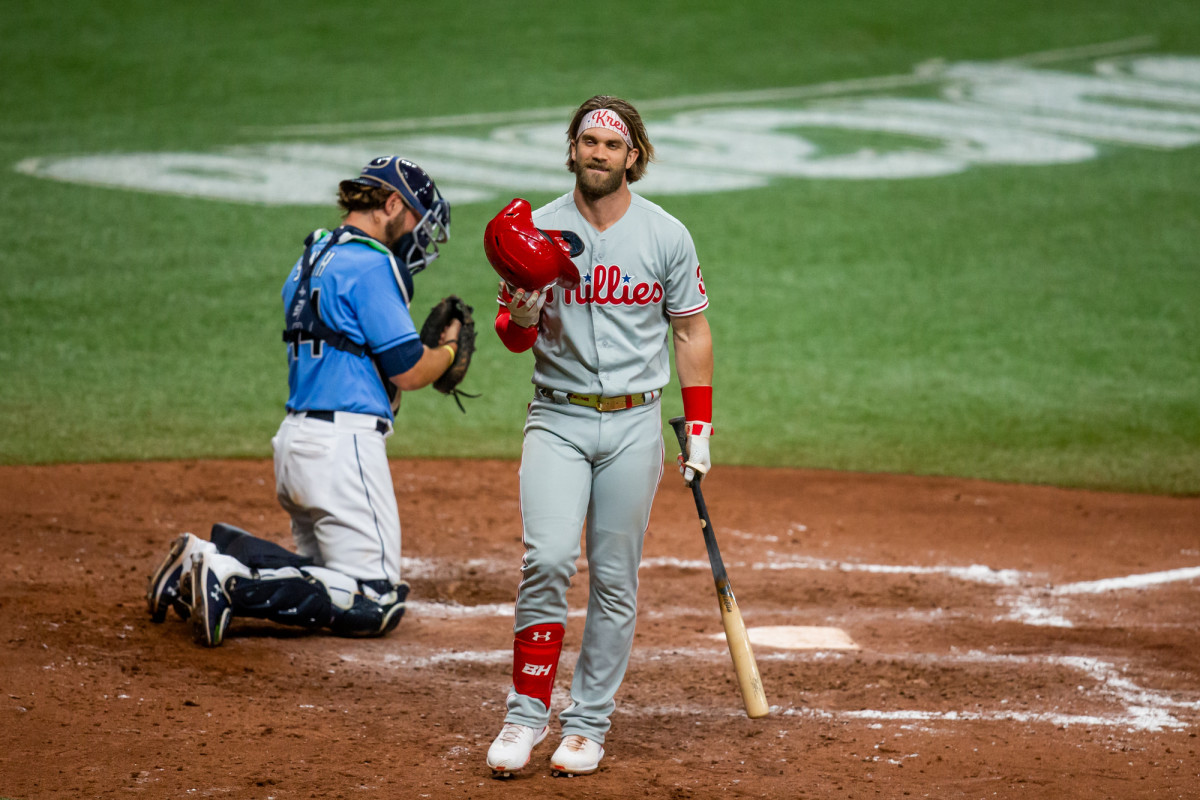
After all, was said and done with the 2020 season, the 60 game schedule was full of postponements due to COVID outbreaks across the league, and other oddities that made it inconsistent. Philadelphia fans could be frustrated with their team but had to have some understanding of it as no one knew how it was going to shake out.
This brings the story to the current season, which shaped up to bring back a sense of normalcy following the 2020 season. During the offseason, the Phillies brought in shortstop Didi Gregorius to help bolster the infield.
The Phillies opened the 2021 season with a strong showing, sweeping the Braves, and taking two games from a series against the Mets. But as the season went on, the usual suspects started to show up with injuries starting to heavily impact the Phillies roster.
Whether it was Aaron Nola going out on the COVID-19 list, Roman Quinn suffering a left Achilles injury, or Rhys Hoskins having season-ending surgery on an abdominal tear. To say that Philadelphia wasn't playing with their best cast is an understatement.
But for the second straight season, the Phillies' season came down to the wire, but once again, the Phillie came up short in a pivotal series against the Atlanta Braves which saw the Braves sweep the Phillies and claim the NL East Pennant for the fourth straight season.
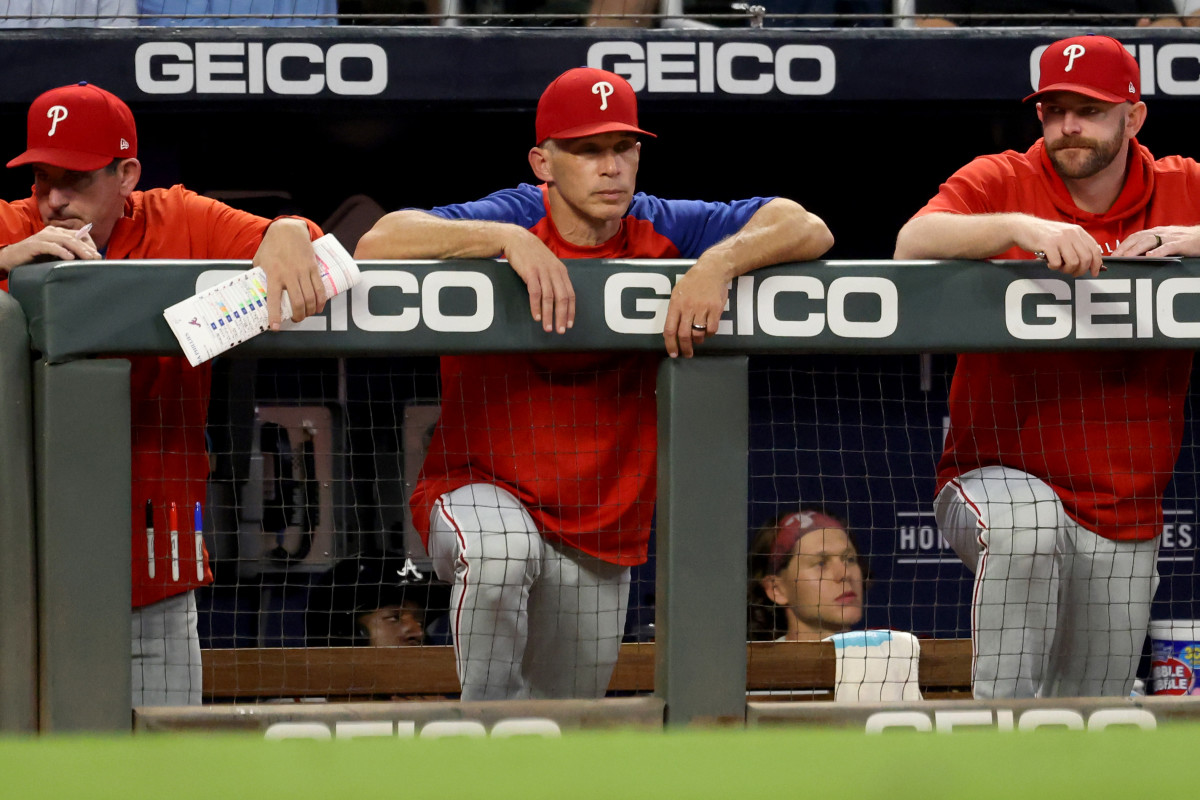
The past decade has been an emotional roller coaster ride for Philadelphians, whether it was watching the Phillies lose 99 games in a season, signing one of the biggest stars in the league, or for two straight seasons come within games of making the playoffs only to fall short within the final days of the season.
Philadelphia throughout the 2011-2021 season should serve as a roadmap for the next decade on what works and what doesn't work for the franchise's style of baseball. It also may serve as a lesson for Phillies fans that the next time their team makes it to the playoffs, they should cherish it because you never know how long it will be before you're back, more importantly, to keep their high hopes alive and well because you never know what the next season may bring.
I guess there's always the next decade.
Make sure to follow Inside the Phillies on Facebook and Twitter!
